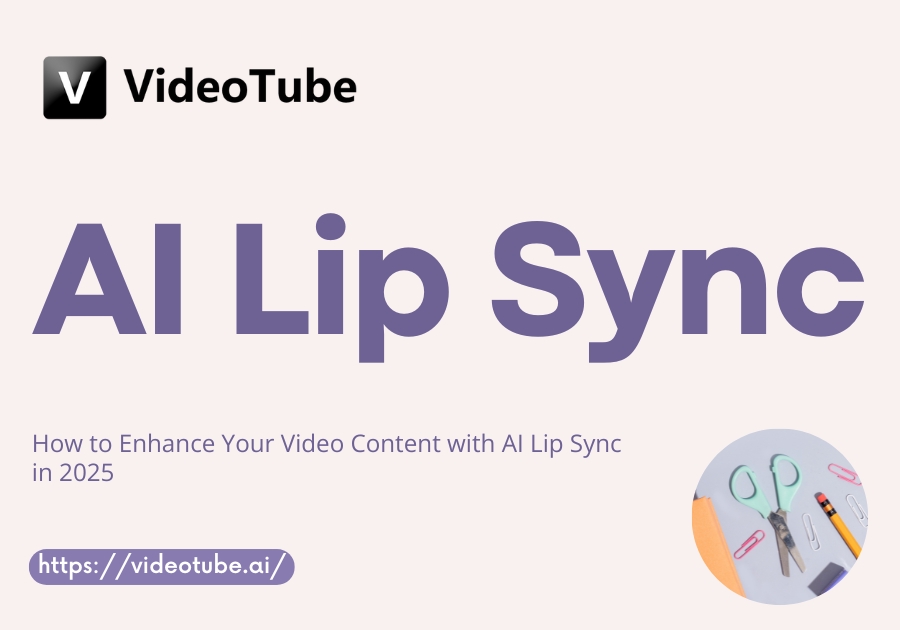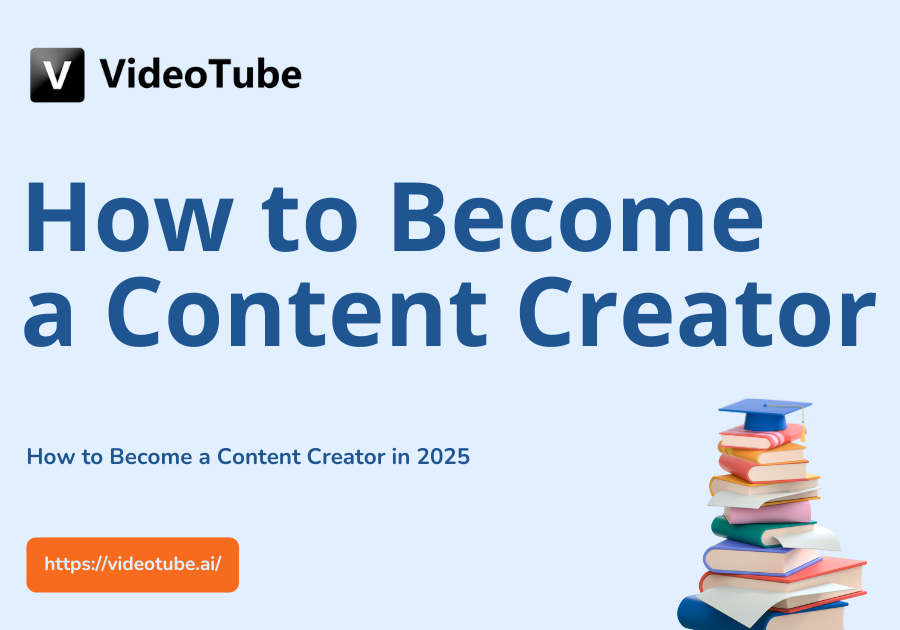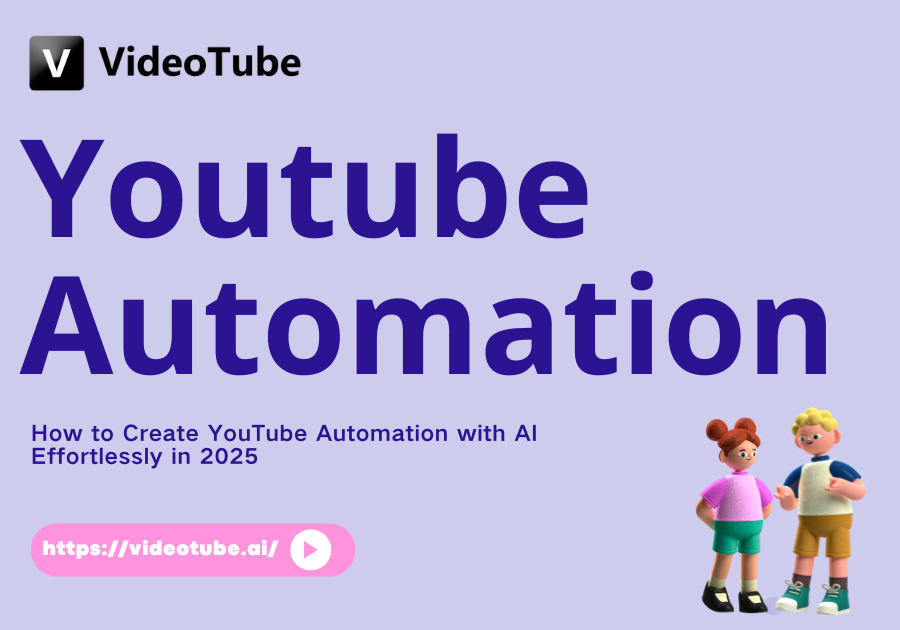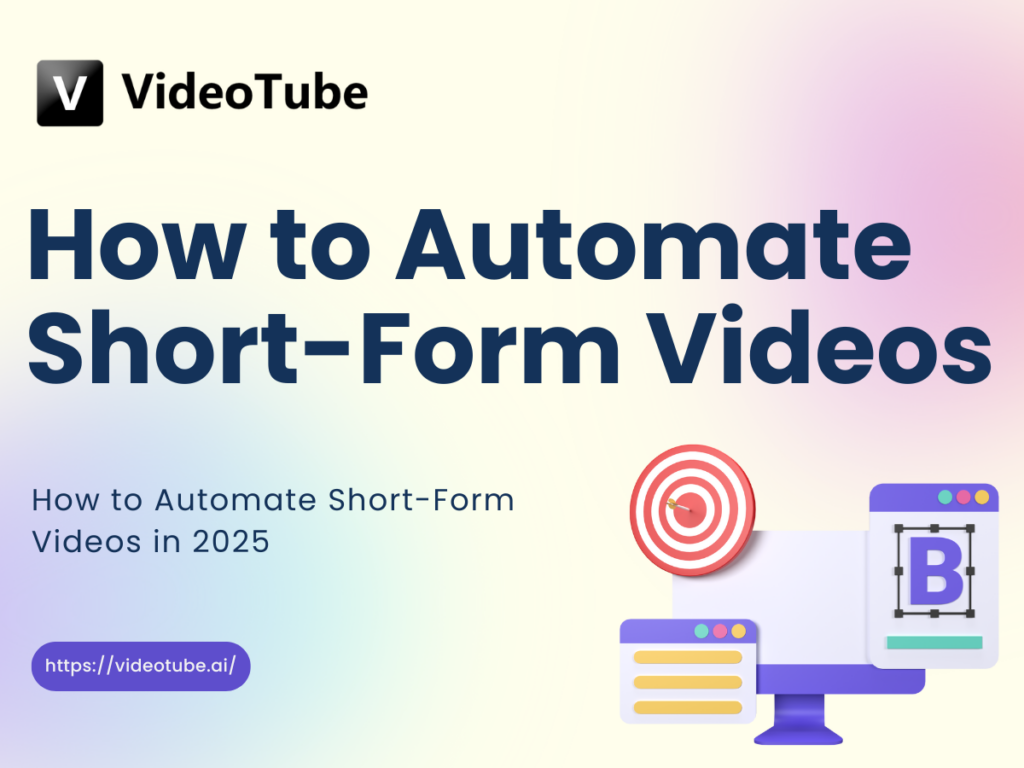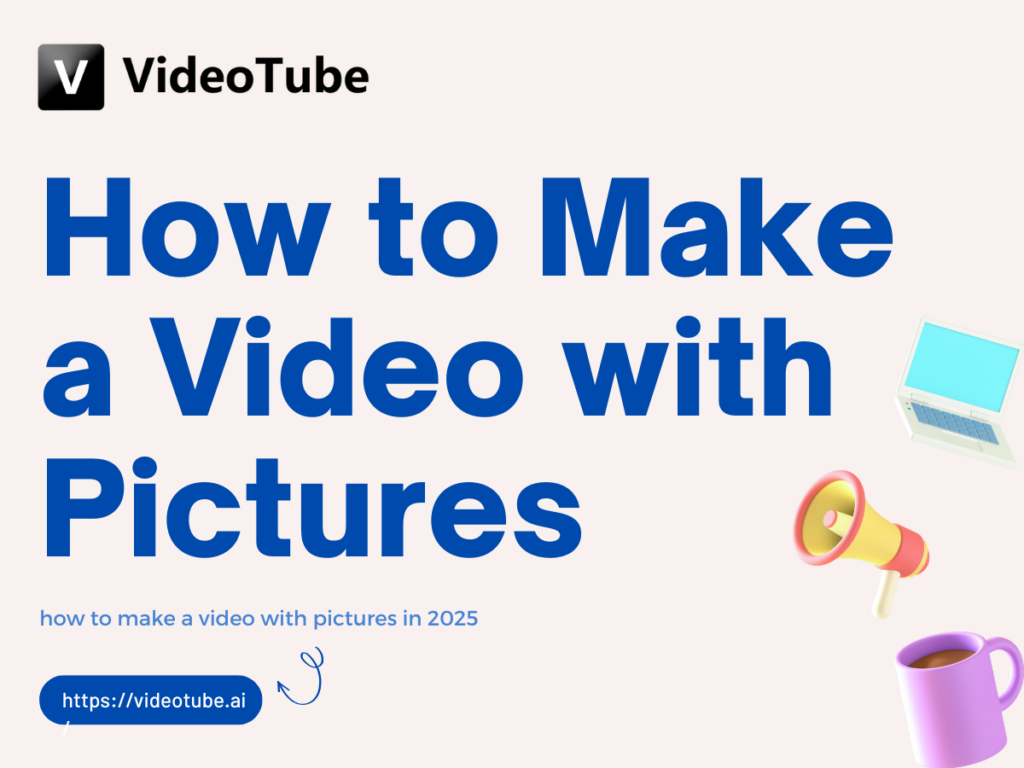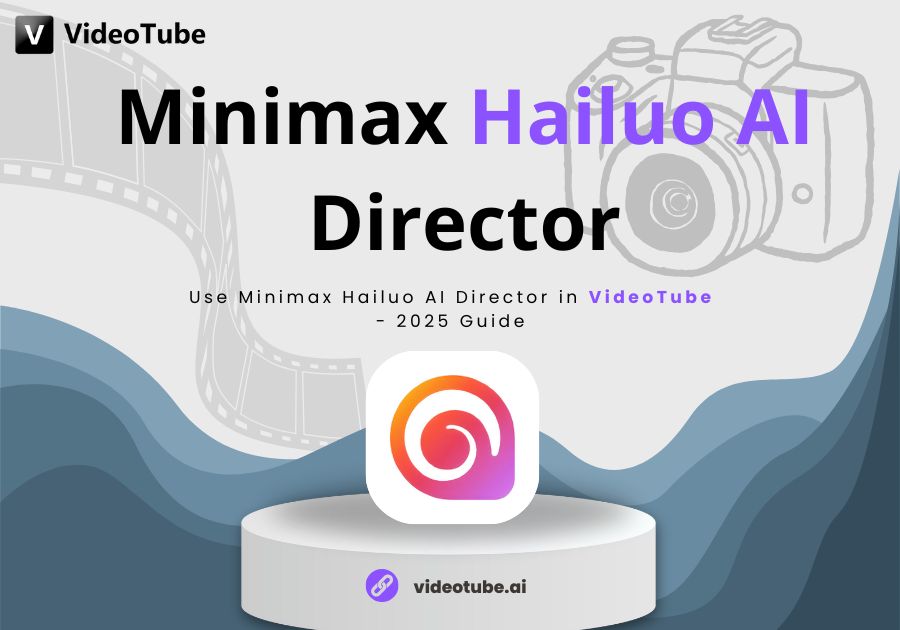What is a Talking Head Video? A Complete Guide for Beginners
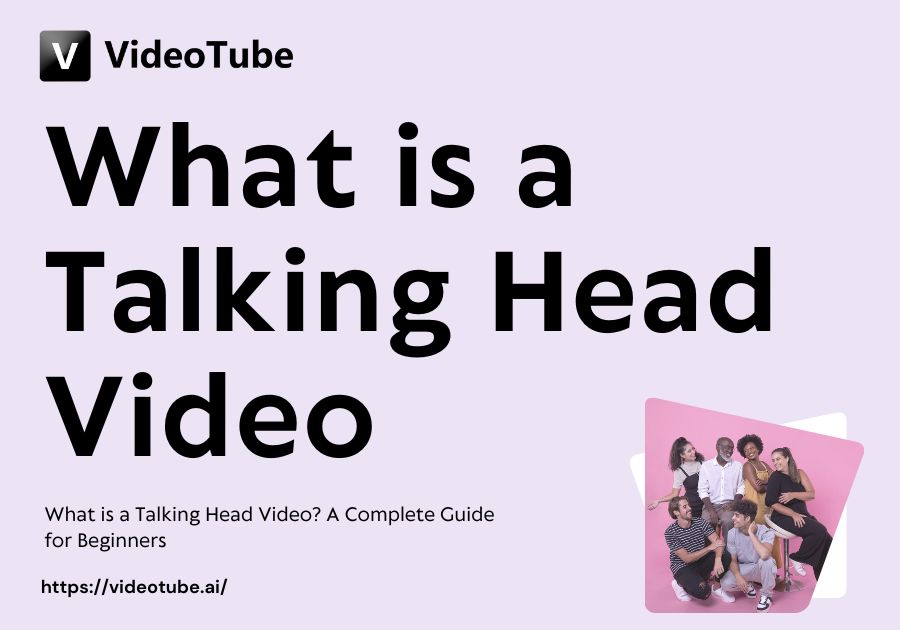
- What is a Talking Head Video
- Key Characteristics of a Talking Head Video
- Why Talking Head Videos Work - Benefits and Impact
- Types of Talking Head Videos
- How to Create a Talking Head Video - A Step by Step Guide
- Talking Head Video Best Practices
- Common Mistakes to Avoid in Talking Head Videos
- Examples of Effective Talking Head Videos
- When to Use Talking Head Videos in Your Strategy
- Conclusion
What is a Talking Head Video
If you've ever browsed YouTube or Instagram, or checked out a company's "About Us" page, you might have come across a video where someone is speaking directly to the camera. This style of video is known as a Talking Head Video. While the name might seem a bit odd, these videos are actually quite engaging and effective, doing much more than just showing a talking head.
So, what is a Talking Head Video? In essence, it’s a style of video where the primary visual element is a person speaking directly to the audience, usually facing the camera, with minimal distractions. It’s a tried-and-true format for communicating messages in the most human way possible — face-to-face, even if virtually.

Key Characteristics of a Talking Head Video
Now that you understand what a Talking Head Video is, let's explore its main features. Imagine it's like knowing what makes a good cup of coffee. Once you learn these details, you'll start noticing them in every video you watch. Talking Head Videos often include a speaker directly addressing the audience, usually framed from the shoulders up. These videos are popular for presentations, tutorials, or interviews because they focus on clear communication and direct connection with viewers. Recognizing these traits will help you identify and appreciate Talking Head Videos more easily.
Face-to-Camera Presentation
In every Talking Head Video, the key moment is when the speaker looks straight into the camera. This simple action gives the feeling of making eye contact, instantly creating a personal bond with the viewer. The speaker often comes across as a friend or trusted advisor, making their message easier for the audience to understand.
Whether the topic is giving stock market advice, providing tips on self-improvement, or showcasing a new product on VideoTube, showing the speaker's face on camera makes everything feel more personal. This connection is strong, even if the speaker and the viewer are far apart.
Minimal Background Distraction
Talking Head Videos focus on the person speaking, not on fancy visuals or busy backgrounds. The speaker is the center of attention. The video might show a plain wall, a clean home office, or a simple branded backdrop, but the audience's attention is always on the person delivering the message. This simple setup helps viewers focus on the speaker's words without getting distracted by anything else in the background.
Focus on Verbal Communication
Talking Head Videos are not like music videos or movie trailers. They don't use fancy camera angles or exciting action. Instead, they focus on giving value through clear and honest speech. The words are important, and so is how you say them. In a world full of visual distractions, a good talking head video stands out like a lighthouse, helping guide people through the noise.
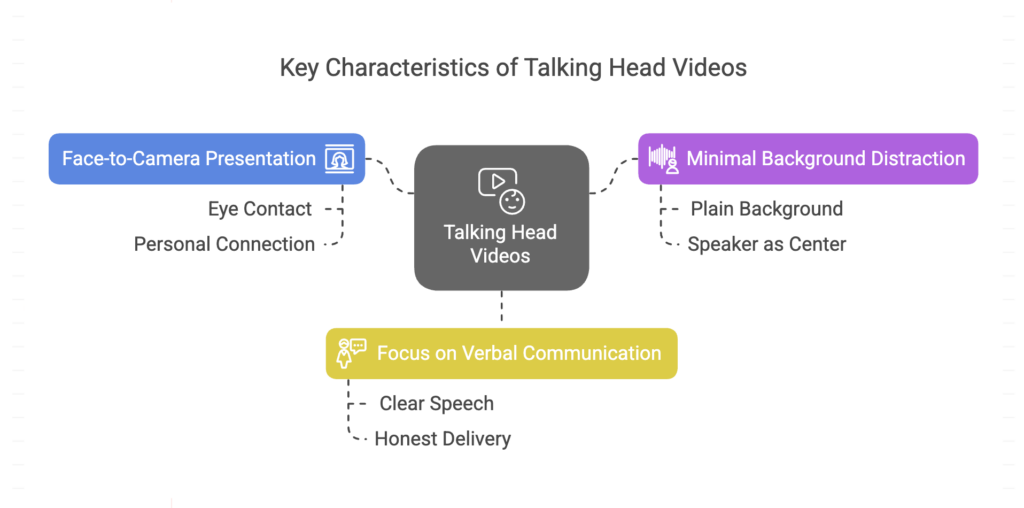
Why Talking Head Videos Work - Benefits and Impact
Why do we see so many Talking Head Videos on VideoTube, in marketing strategies, and digital classrooms? Let's dive into why this straightforward style is so effective and well-liked.
Human Connection and Audience Trust
People naturally focus on faces. Even before we learn to read or write, we recognize faces, understand expressions, and feel emotions. A Talking Head Video takes advantage of this ability by featuring a face prominently on the screen. This face-to-face digital interaction builds trust more quickly than graphs or written announcements ever can.
When your audience sees your face, hears your voice, and observes your expressions, they start to feel familiar with you. Over time, this sense of familiarity grows into trust and loyalty, which are extremely important in the business world.
Clarity of Message and Storytelling
The Talking Head Video uses a straightforward approach. This straightforwardness helps keep distractions away so people can focus on the main message. Whether you're explaining quantum physics or introducing a new eco-friendly shampoo, this style makes storytelling clear and easy to understand. It helps make complex topics feel personal and relatable, allowing people to connect with abstract ideas in a warm and engaging way.
Cost-Effective and Easy to Produce
You don't need to spend a lot of money to make a good Talking Head Video. All you need is a smartphone, some decent lighting, and your own unique personality. These simple tools can help you create something that looks really good. There are websites, like VideoTube, that you can use to share your video. Plus, there are some basic editing programs available. These programs can help you make your videos look more professional without costing too much, making it easier for anyone to create great videos.
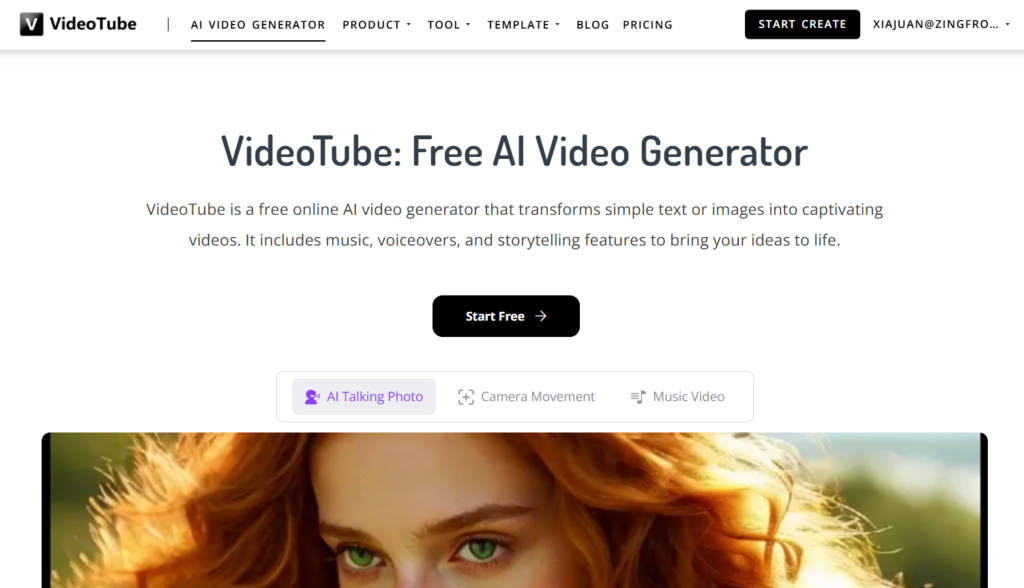
Types of Talking Head Videos
To understand what a Talking Head Video is, we should also look at how versatile it can be. Much like a Swiss Army knife that has many tools for different tasks, this type of video can fit into all sorts of scenarios. Whether it's for education, business presentations, or simple personal messages, a Talking Head Video can effectively convey information in a variety of settings.
Educational Talking Head Videos
Educational Talking Head Videos are everywhere in today's learning, from Khan Academy to university lectures. In these videos, an expert appears on screen to explain ideas and occasionally uses visuals like pictures or charts to clarify the lesson. These videos are effective because they create a feeling similar to one-on-one tutoring, keeping learners engaged and making the experience feel personal.
Marketing and Sales Talking Head Videos
Storytelling plays a crucial role in marketing. Brands use Talking Head Videos to present their more personal side. These videos can include things like product demonstrations, inspiring stories from the founder, or feedback from satisfied customers. When someone speaks directly to the camera, it connects with viewers on an emotional level and motivates them to act, such as making a purchase.
To expand their audience and create a sense of community around their offerings, marketers frequently share Talking Head Videos on platforms like VideoTube. This approach not only broadens their reach but also strengthens their connection with existing and potential customers.
Corporate and Internal Communication Videos
Boring email memos are gone. These days, businesses use Talking Head Videos for employee updates, CEO messages, and HR training. When you see a real person, especially someone from higher management, it builds trust and keeps everyone united.
Talking Head Videos make it easier for people to connect in global companies, no matter where they are in the world. This way, company messages become more personal and open, helping employees feel more connected and informed.
YouTube Influencer and Vlogger Videos
Influencers spend much of their time in front of the camera to connect with their audience in a genuine way. People watching them want content that feels real and honest. AI Talking Photo let influencers speak directly to their viewers, with no filters. This type of video can take many forms, such as a "Day in My Life" vlog, product reviews, or sharing personal opinions. These formats are popular because they keep audiences engaged and coming back for more.
On platforms like VideoTube, many creators use these simple videos to earn a lot of money, often reaching six-figure incomes. This success shows that with just a camera, your face, and your own ideas, you can create content that appeals to people and potentially build a profitable career.
Testimonial and Case Study Videos
Seeing a satisfied customer talk on camera is one of the most effective ways to show social proof. These Talking Head Video testimonials give your brand's promises a real and trustworthy feel. They help new customers connect with the success stories of others who have used your products or services.
Case study videos take this concept further by blending facts and personal emotions. They create compelling stories that highlight the challenges people faced and the successes they achieved. These videos are powerful because they not only provide data but also humanize the experiences, making them relatable and engaging for viewers.

How to Create a Talking Head Video — A Step by Step Guide
Now that you know what a Talking Head Video is, it's time to start making one. Whether you're just starting out with technology or you've been creating content for a while, these steps will help you produce a video that looks polished and professional. We'll cover everything you need to know to get the best results.
Step 1: Define Your Purpose
Before you start recording your video, it's important to think about why you're making it. Are you aiming to teach something new, inspire people, promote a product, or simply entertain your audience? Having a clear purpose will make your message much stronger and more effective.
Step 2: Write a Conversational Script
Try not to use robotic or overly formal language. When writing for a camera, aim for a friendly tone, like writing to a friend. A Talking Head Video is more successful when the person speaking appears real and genuine, not stiff or rehearsed. Being natural helps the audience connect better with the message.
Step 3: Set Up Your Equipment
Camera: To record videos, you can use any modern smartphone or a webcam. These are usually enough for most needs.
Lighting: Using natural sunlight is very effective for good lighting in your videos. However, if you want to make your lighting even better, you can get a ring light, which is both good and affordable.
Microphone: Having clear and good audio is extremely important; it can make your video much more professional. For better sound quality, consider using a good lapel or USB microphone, which will help people hear you more clearly.
Step 4: Record Multiple Takes
It's okay if you make mistakes along the way. Many top YouTubers also need a few tries to get things right. Keep recording your video until you feel sure of yourself and it comes across naturally.
Step 5: Edit for Clarity and Flow
Eliminate any awkward pauses in your video for a smoother flow. Ensure the sound levels are even and clear, which makes the video easy to listen to. You can include some supportive pictures or simple graphics to enhance your content but don't overdo it. Useful editing tools include Adobe Premiere, Final Cut, or the editing features already provided by VideoTube. These tools can help make your video look professional and polished.

Talking Head Video Best Practices
So you’ve got the basics down. Now let’s polish your craft and avoid rookie mistakes that might sabotage your masterpiece.
Choosing the Right Tone for Your Audience
When creating a video for business investors, your style will differ from that used in a video for young people who love memes. It's essential to know who your audience is and tailor your approach accordingly. Your style or tone can be formal, fun, or a mix of both, depending on the audience's preference. Think of your tone as the initial handshake that sets the stage for your message—it's crucial to make a strong impression right from the start.
Maintaining Natural Eye Contact with the Camera
Instead of watching your own image on the screen, focus on looking directly into the camera lens. This gives the impression of making eye contact and helps create a strong human connection. At first, this might feel a bit uncomfortable, but keep practicing. As you do, it will start to feel more natural, and you'll come across as more genuine and real in your communication.
Keeping Your Video Short and Focused
Today, people's attention spans are even shorter than a goldfish's memory. When creating a Talking Head Video, it's best to concentrate on presenting just one main idea at a time. Make sure to keep the video brief and direct. A message that is clear and focused sticks in the mind more effectively, and your audience will be grateful that you consider their time valuable.
Using Graphics to Support, Not Distract
In a Talking Head Video, adding some images or captions can help explain things better. However, it’s important not to fill the video with too many animations or pop-ups. The main person viewers should focus on is the speaker, not the slides. Keep the emphasis on what the speaker is saying and doing.
Common Mistakes to Avoid in Talking Head Videos
Even the best speakers can fall victim to common pitfalls when creating a talking head video. No worries — I’ve seen these blunders too many times to let you repeat them!
Poor Lighting or Background Noise
Nothing screams "amateur hour" more than dim lighting and distracting background noises. A talking head video should spotlight you — literally! Poor lighting can make your face hard to see, and background noise can disrupt your message. If the viewer can’t clearly see or hear you, they’ll click away faster than you can say "What is a Talking Head Video"
Fix it: Use natural daylight when possible or invest in a softbox or ring light. For sound, a simple lapel mic or directional shotgun mic can elevate your audio quality to pro level.
Monotone Voice and Low Energy
Have you ever stopped paying attention during a lecture? The same thing happens when you use a dull, monotone voice in your video. Even if your message is important, talking without energy or variation makes people stop listening and lose interest.
To improve this, think of your video as a chat with a friend. Change how you speak by varying your tone, pace, and loudness. A well-timed smile can also help—your energy will shine through the camera, keeping your audience engaged.
Overloading with Information
Less is more. Many people who create videos try to include too much information at once. If a Talking Head Video feels like a long, 3-hour class, people might lose interest, even if the topic is fascinating.
To address this, focus on just 1 or 2 main ideas per video. For complicated topics, break them down into smaller, easy-to-understand parts. This makes it easier for viewers to remember what they watched and also gives you more material to work with for future videos!
Lack of Audience Engagement Techniques
Your audience is more than just people who sit and watch. A good talking head video helps them feel involved and connected. You can do this by asking them questions or giving them something to think about. Also, encourage simple actions like nodding or pausing while they watch.
To improve the experience, try these things: Ask your viewers questions that make them think, invite them to leave comments in the section below the video, and let their curiosity grow. Even though a video is mostly one-way communication, finding ways to create a back-and-forth feeling can help build a stronger sense of community and trust. This approach makes your audience feel like they are part of something, even if they are watching alone.
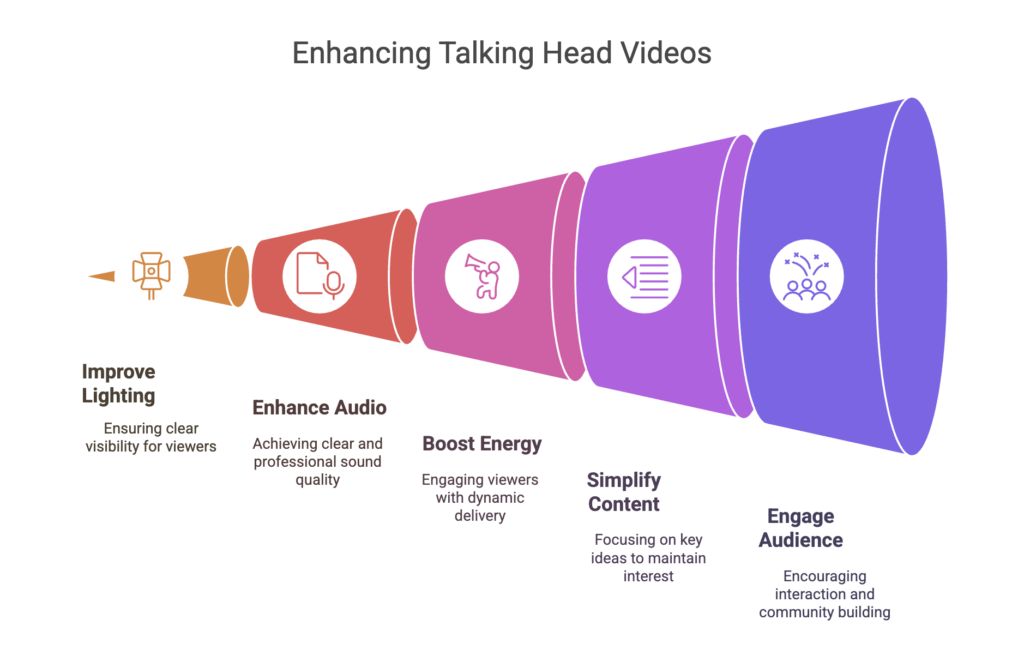
Examples of Effective Talking Head Videos
Let’s bring all this theory to life. Here are some real-world examples where the humble Talking Head Video shines brighter than a studio blockbuster.
YouTube Educational Channels
From quick lessons on coding to advice about managing money, AI Talking Photo are very popular in the educational section of YouTube. They are popular because when a person talks directly to the camera, learning feels more personal and easier to understand. Instead of reading a boring textbook, it feels like you're learning from someone who really knows what they're talking about. Channels like Kurzgesagt, which uses some animations, or Ali Abdaal, who focuses entirely on talking to the camera, handle this style very well. They mix clear explanations, interesting stories, and lots of energy, which keeps people interested and wanting to learn more.
Influencer Marketing Video Styles
Influencers really enjoy creating Talking Head Videos. They talk directly into the camera about various topics. They might review new technology gadgets one day, demonstrate skincare routines another day, or share life advice. This way of making videos helps them form genuine connections with their audience.
Video platforms like VideoTube are great places to find a lot of these videos. Content creators use this face-to-camera style to make themselves seem more trustworthy and sincere to viewers.
Corporate Announcements and Company Culture Videos
CEOs, managers, and HR teams have realized that Talking Head Videos work well for making announcements or sharing information about company culture. These videos add a personal and human feel that written memos or emails cannot provide.
When businesses aim to demonstrate openness, celebrate important achievements, or welcome new team members, using a talking head video is often more effective than other formats.
When to Use Talking Head Videos in Your Strategy
The Talking Head Video isn’t a one-size-fits-all solution, but it fits into more strategies than you might think. Let’s break down when and why you should use this powerhouse format.
Marketing and Sales Campaigns
If you want to talk about your product, solve customer problems, or build a personal connection with potential buyers, using AI Talking Photo can be very helpful. These videos make your message more like a friendly conversation instead of an intense sales pitch. They help you communicate in a relaxed way while addressing specific issues that your customers might have. This can make potential buyers feel more comfortable and open to what you are offering.
Employee Training and Onboarding
When new team members join, they will enjoy a personal touch in their orientation. Having a video message from the CEO or team leader can really help. In this video, they can talk about what the company values, the rules everyone should follow, and what is expected of each person. This approach makes everything clear and easy to understand in a friendly way.
Customer Testimonials and Success Stories
People tend to trust other people. When real users talk about their experiences in Talking Head Videos, it creates a type of proof that written words can't achieve. Websites like VideoTube help these videos reach more people by making them easy to find and share. These platforms also ensure the videos are optimized for search engines, which means more people can see these genuine testimonials.
Personal Branding and Thought Leadership
Want to show that you are an expert in your field? Begin by speaking out! Talking Head Videos are a great way to share your knowledge and let people see your personality and beliefs. You can post these videos on LinkedIn, VideoTube, or your own blog. Sharing videos in this way can help you turn viewers into loyal followers who trust and support you.

Conclusion
What is a Talking Head Video? It goes beyond a simple video of a person speaking into a camera. Think of it as a friendly introduction, a real chat, and even a short lesson all in one package. This format includes the person looking and talking straight to the camera, which makes it great for creating real connections with viewers. It's one of the most adaptable and impactful ways to communicate in today's media world.
